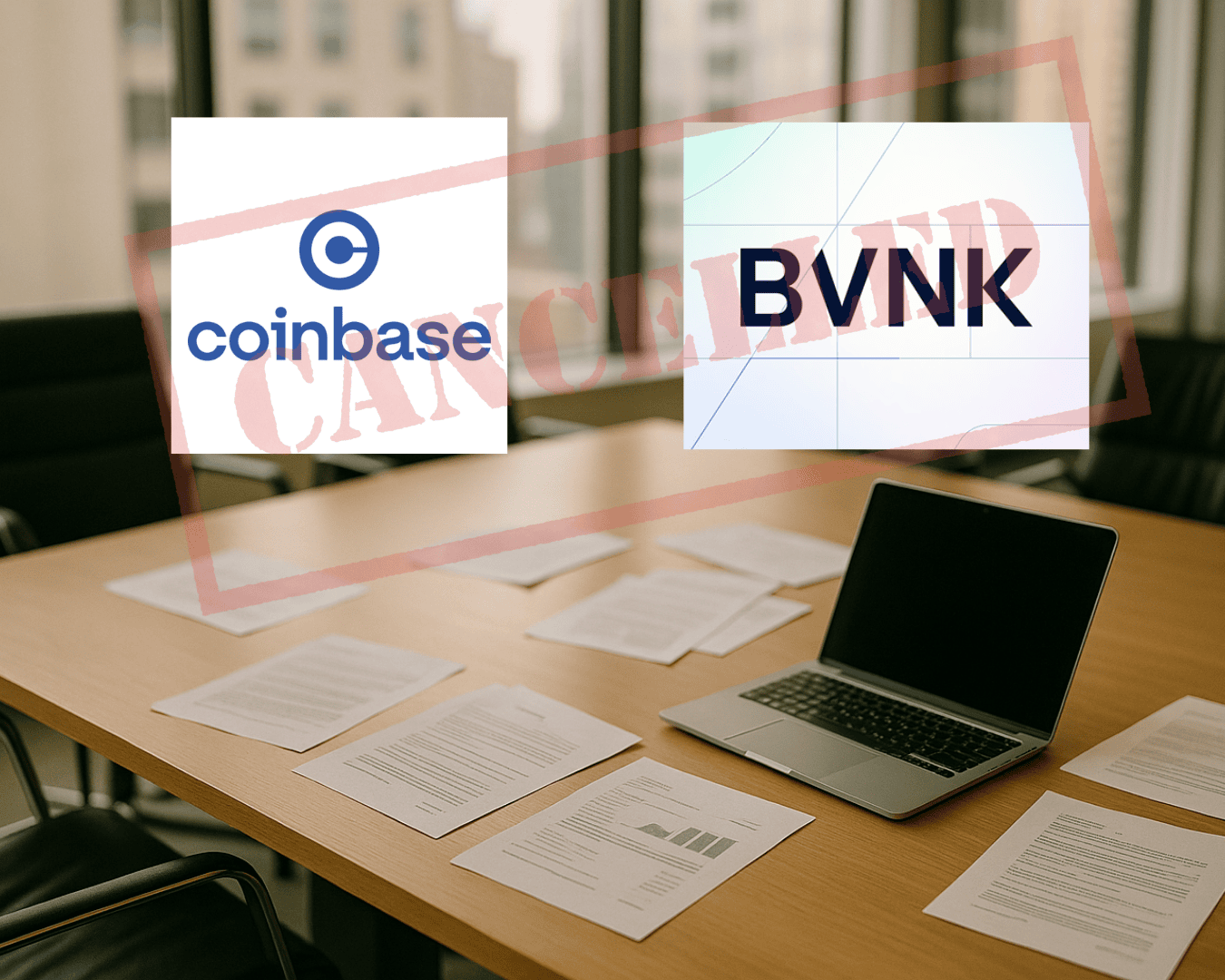Small and midsize businesses (SMBs) are struggling to hire in a competitive job market. With 86% reporting few or no qualified applicants and 40% losing top talent due to slow hiring processes, attracting and retaining employees has become a major challenge. To stay ahead, SMBs need to rethink their hiring strategies and focus on:
- Prioritizing key roles: Identify critical positions and assess workforce needs to avoid disruptions.
- Offering competitive compensation: Research market salaries, provide clear benefits, and include non-monetary perks like flexibility or professional development.
- Improving hiring processes: Simplify applications, use technology for pre-screening, and communicate quickly with candidates.
- Expanding recruitment channels: Leverage digital platforms, local talent sources, and employee referrals.
- Enhancing onboarding and retention: Implement structured onboarding, mentorship programs, and gather feedback to reduce turnover.
Small business owners struggling to fill jobs
Assess Workforce Needs and Prioritize Key Roles
Before diving into hiring, take a moment to assess what your business truly needs. With over 60% of business owners facing labor shortages - and more than 20% labeling the issue as "critical" to their operations - small and medium-sized businesses (SMBs) are zeroing in on the roles they can’t afford to leave unfilled.
The stakes couldn’t be higher. More than 80% of businesses are losing sales because of staffing challenges, and nearly 20% are reporting severe financial hits. When resources are tight, every hiring decision matters. By focusing on the most essential positions, you can build a hiring strategy that supports your business goals in a challenging labor market.
Define Critical Roles
Start by identifying the roles that keep your business running and your revenue steady. These are the positions where any vacancy would disrupt operations or harm customer satisfaction.
Think about your needs in two ways: immediate priorities and long-term goals. For immediate needs, focus on roles that directly impact revenue, customer service, or essential operations. For example, a restaurant might prioritize hiring line cooks and servers, while a manufacturing business might target machine operators or quality control staff.
For the future, consider where your industry is heading. In retail, you might need e-commerce specialists down the line. In construction, workers trained in modern building technologies or sustainable practices could become increasingly important.
Some roles naturally rise to the top of the list. Revenue-generating positions, like sales reps and customer service staff, should take priority. Following that, operations-critical roles, such as maintenance technicians or supervisors, are essential for smooth day-to-day functioning. And don’t overlook compliance and safety roles if they apply to your industry - certified safety officers or quality inspectors may not just be helpful; they could be legally required. Clearly defining these key roles sets the stage for addressing skills gaps and hiring the right talent.
Conduct a Skills Gap Analysis
A skills gap analysis is a systematic way to compare your current team’s abilities with the skills your business will need. It helps you decide whether to hire new employees, train your existing team, or do both.
"Skills gap analysis in the modern age isn't just about identifying missing competencies but also about creating an organizational culture of continuous learning, adaptation, and collaboration." - Miriam Groom, CEO of Mindful Career and Leader Human Capital at KPMG
Start by evaluating your current team. List out each employee’s skills and certifications. Go beyond job titles - talk to supervisors and team leaders to get a clear picture of strengths and areas for improvement.
Next, define what you’ll need. Look at your business goals for the next 12 to 24 months and identify the skills required to get there. Include both hard skills, like technical expertise, and soft skills, such as leadership or problem-solving.
Compare the two lists to spot the gaps. For instance, your sales team might need digital marketing know-how, or your production staff might require training on new equipment. Some gaps can be addressed through employee training, while others might call for new hires.
Big companies have successfully used this approach. AT&T, for example, launched its "Workforce 2020" initiative after identifying gaps in digital skills, data science, and cybersecurity. They partnered with Udacity and Georgia Tech to retrain their workforce. Similarly, Amazon pledged $700 million to its "Upskilling 2025" program to equip 100,000 employees with technical skills. For SMBs, the principle remains the same: assess your team’s current capabilities, identify what’s missing, and take action to bridge those gaps.
Update Job Descriptions
Outdated or vague job descriptions can make it harder to attract the right candidates in today’s competitive market. A well-crafted job description not only clarifies expectations but also helps you stand out to potential hires.
Be specific about responsibilities and qualifications. Instead of generic phrases like "handle customer service", detail what the job involves and the outcomes you expect. Highlight both essential and preferred qualifications, focusing on the skills and experiences that matter most. Many SMBs are even dropping four-year degree requirements for roles where they aren’t necessary, widening the talent pool.
Showcase growth opportunities and perks. In a tight labor market, candidates want more than just a paycheck. Highlight training programs, career advancement opportunities, flexible schedules, or unique benefits your company offers.
Use clear, engaging language. Avoid corporate buzzwords and write in a way that reflects your company’s personality, whether it’s casual and collaborative or more structured.
Include salary ranges and benefits. Transparency about pay can attract candidates and speed up the hiring process. Plus, with many states now requiring salary ranges in job postings, this step can keep you compliant with local regulations.
Offer Competitive Compensation and Benefits
In today’s competitive job market, attracting top talent requires more than just offering a good salary. Building a compensation package that stands out involves looking beyond paychecks while staying mindful of your budget.
Research Market Salaries and Benefits
Start by grounding your decisions in solid market data. Resources like Glassdoor, PayScale, and the Bureau of Labor Statistics can give you a clear picture of what similar roles are paying in your area. Don’t just look at base salaries - consider total compensation, including health insurance, retirement plans, and paid time off.
Take local factors into account. For instance, a marketing coordinator’s salary in a large metropolitan area will likely differ from one in a smaller town. Cost of living and competition among local employers play a big role in determining what’s considered competitive. In areas with fewer companies vying for talent, you might have more flexibility, but in bustling cities, you’ll need to match or exceed the local standards to attract candidates.
Benefits are equally important. While salaries often get the spotlight, perks like health insurance coverage, vacation policies, and other benefits can make or break a job offer. Research how much local employers cover for health insurance premiums, what’s standard for paid time off, and what perks are becoming common in your industry.
If your budget doesn’t allow for top-tier salaries, focus on where you can shine. Maybe you can’t offer the highest paycheck, but you can stand out with excellent health benefits, generous time off, or flexible work arrangements. A well-thought-out compensation package can be a game-changer in attracting and keeping top talent.
Include Flexible and Non-Monetary Perks
Non-monetary perks can pack a punch without breaking the bank. In fact, 65% of employees say they prefer non-cash rewards over financial ones. These perks can create a lasting impact and help your company stand out.
Flexible work options are a favorite among employees. Companies like Salesforce let eligible employees choose whether to work remotely, in the office, or a mix of both. Similarly, Eventbrite offers candidates the choice between fully remote or hybrid roles right from the start. Smaller businesses can use this flexibility as a key selling point.
Creative leave policies are another way to stand out. For example, Hiya gives employees the last Friday of every month off, while Eventbrite closes its offices on the first Friday of each month for company-wide rest. These initiatives show a commitment to work-life balance without adding administrative headaches.
Investing in professional development is another smart move. With 86% of employees willing to leave their jobs for better growth opportunities, offering ways to learn and advance can make a big difference. Companies that prioritize employee development often see higher productivity and revenue per employee. This doesn’t have to mean costly programs - mentorships, conference attendance, or even allowing time for personal projects can go a long way. For instance, Myplanet lets employees dedicate 5% of their time to passion projects.
Recognition programs are another budget-friendly way to boost morale. Employees who feel unrecognized are twice as likely to leave within a year, while companies with strong recognition programs see 31% lower turnover rates. And it’s not just about retention - nearly 78% of employees say they’d be more productive if they received more recognition.
Communicate Total Compensation Clearly
Make sure candidates understand the full value of what you’re offering. While many focus on base salary, they may overlook the bigger picture. Break down the full package - include details like health insurance contributions, retirement matching, paid time off, and any other benefits. For example, highlight a $500 monthly health insurance contribution or the value of three weeks’ vacation alongside the salary.
Be upfront about growth opportunities. Share information about typical salary increases, promotion timelines, and advancement paths. Highlighting real examples of internal promotions can help candidates see their potential future with your company.
Don’t forget to showcase unique perks. Whether it’s flexible hours, training budgets, or other standout benefits, make sure these are front and center. These extras can often tip the scales when candidates are evaluating similar offers.
Use multiple channels to communicate your compensation package. Include details in job postings, bring them up during interviews, and provide written summaries for serious candidates. The clearer and more transparent you are, the more likely you’ll attract and retain the right talent.
Combining monetary and non-monetary incentives is key to building a competitive compensation strategy. A clear and comprehensive approach ensures your offer stands out in today’s crowded hiring landscape.
Expand Recruitment Channels and Broaden Outreach
When traditional hiring methods fall short, it’s time to think outside the box. Expanding your recruitment channels opens doors to talent pools you might have missed and connects you with candidates who aren’t actively job hunting but could be a perfect match for your open roles. This approach works hand-in-hand with efforts to speed up and fine-tune your hiring process.
Use Digital Platforms and Social Media
Online platforms are a goldmine for finding talent. General job boards are great, but industry-specific ones can take your search to the next level. For example, if you're hiring for tech roles, platforms like Stack Overflow Jobs or GitHub allow you to connect with developers who actively showcase their expertise. For creative positions, sites like Behance and Dribbble let you browse portfolios alongside resumes, giving you a fuller picture of a candidate’s skills.
Social media is another powerful tool, especially for reaching passive candidates. Facebook’s job posting feature lets you target specific demographics and locations, while Instagram can highlight your company culture through behind-the-scenes content. Twitter is particularly effective for engaging professionals in fields like tech, marketing, and media.
Don’t overlook niche job boards that cater to specific communities or needs. Sites like DiversityJobs, VeteranJobs, and FlexJobs help you connect with underrepresented groups or candidates seeking flexible work arrangements. These platforms often attract individuals who are more likely to engage with opportunities that align with their personal values.
You can also get creative with video job postings on platforms like TikTok or YouTube. A short, engaging video showcasing your workplace or featuring team members sharing what they love about their jobs can give potential candidates a better feel for your company than a traditional text ad ever could.
Engage Local Talent Sources
Local talent pools can be a treasure trove of skilled candidates. Community colleges, for instance, are often overlooked despite serving about 44% of the undergraduate population in the U.S. These institutions are particularly focused on students from underserved communities, including those from lower-income backgrounds, older learners, and underrepresented groups. This makes them excellent partners for diversity and inclusion efforts.
Community colleges also offer work-based learning programs like apprenticeships and internships, which provide students with practical experience while giving you access to eager, motivated talent. By contributing resources - whether it’s staff time, funding, or insights into labor market needs - you can help shape these programs to ensure students develop skills that align with your hiring needs.
"Work/learn is the strongest model, and the best outcomes are achieved when the employer chooses all education activities, including courses at college, activities at college and activities at work."
- Dennis Dio Parker, Consultant supporting TMNA regional talent development
Flexible learning options, such as evening and weekend classes, make community colleges a great source of candidates who are balancing education with work. Interestingly, since 2012, individuals with some college or an associate’s degree have comprised the largest share of the U.S. civilian labor force compared to other educational groups.
Trade associations and professional organizations are another excellent resource. These groups often host job boards, networking events, and career fairs, connecting you with professionals who are already engaged in your industry.
Additionally, local workforce development boards can help you find and train workers. They often offer funding for training new hires, identify regional skills gaps, and connect you with job seekers who are actively improving their qualifications.
For roles requiring specialized skills, consider partnering with vocational schools and trade programs. These institutions maintain strong relationships with local employers and can provide a steady stream of trained candidates for technical positions.
Implement Employee Referral Programs
After broadening your external channels, don’t forget to tap into your internal network. Your current employees can be some of your best recruiters. They know your company culture inside and out and can identify candidates who’d be an excellent fit. Employee referral programs leverage these personal networks to find talent that might otherwise go unnoticed.
To make a referral program work, keep it simple and transparent. Offer clear incentives, such as bonuses ranging from $500 to $2,000 for successful hires after a 90-day probation period.
But cash isn’t the only motivator. Spice things up by offering perks like extra vacation days, premium parking spots, gift cards, or even donations to a charity of the referring employee’s choice. Some companies use tiered rewards, offering larger bonuses for harder-to-fill roles.
Keep the program top-of-mind by regularly sharing updates and reminding employees about open positions. Publicly recognizing employees who make referrals - even if their candidates aren’t ultimately hired - can encourage ongoing participation and foster a culture of engagement.
You can also expand the referral network beyond current employees. Former employees, customers, vendors, and professional contacts can all be valuable sources of referrals. Alumni networks, especially from employees who left on good terms, are particularly useful since these individuals already understand your company culture and may have strong industry connections.
Speed Up the Hiring Process to Avoid Losing Candidates
A fast hiring process is no longer just a nice-to-have - it’s a must. With recruitment efforts expanding across multiple channels, moving quickly is key to securing top talent. In today’s competitive job market, delays can cost you. Nearly 40% of SMB hiring managers admit to losing strong candidates to competitors due to slow hiring cycles.
But it’s not just about losing talent. Long hiring processes also weigh heavily on your team, stretching resources thin and disrupting productivity. Every unfilled position adds pressure, making it harder to meet goals.
Simplify Application Procedures
The application process is often a candidate’s first real interaction with your company. If it’s complicated or time-consuming, you risk losing them before they even get started. Many candidates, especially those applying via mobile, abandon applications that ask for too much upfront. Keep it simple: ask only for the essentials like name, contact details, a resume, and one or two key screening questions. You can always gather more information later in the process.
Don’t forget to test your application process on a smartphone to ensure it’s mobile-friendly. Allowing candidates to apply directly through platforms like LinkedIn or Indeed can also make things easier. One manufacturing client saw a 30% drop in application abandonment after switching to a one-page form and enabling LinkedIn and Indeed profile submissions. Adding features like resume uploads that auto-fill fields can further reduce friction and save candidates time.
This streamlined approach not only improves the candidate experience but also helps you move faster to the next stages of hiring.
Use Technology to Pre-Screen Candidates
Technology can be a game-changer when it comes to speeding up the hiring process. Tools like applicant tracking systems (ATS) and AI-powered resume screeners can quickly identify candidates who meet your qualifications by analyzing resumes for relevant experience, skills, and keywords. For technical roles, online skills assessments provide an efficient way to evaluate candidates early on, saving time and offering objective insights.
Video screening interviews are another great option, offering a quick glimpse into a candidate’s communication skills and personality without the need for a lengthy phone call. Automated reference checks can also speed things up, gathering feedback faster than traditional methods. By using these tools and applying clear criteria, you can focus your time on the most promising candidates.
Provide Timely Feedback and Follow-Up
Speedy communication is a competitive advantage in hiring. Research shows that candidates expect feedback within a week, and responding within 48 hours significantly boosts engagement and acceptance rates.
Set internal deadlines for each stage of the process and let candidates know what to expect - for example, promising to follow up within two business days after an interview. Assign a hiring coordinator to ensure timelines are met and keep things moving.
Automated email updates can also keep candidates in the loop, even if you don’t have a final decision yet. A quick message like, “We’re still reviewing applications and will update you by Friday,” shows respect for their time and keeps them engaged. Clear communication builds trust and keeps candidates interested.
Tracking metrics like time-to-fill, drop-off rates, offer acceptance rates, and candidate satisfaction scores can help identify where your process might be losing momentum. A faster, more organized hiring process doesn’t just fill roles quicker - it signals to candidates that you value their time and are serious about bringing them on board.
sbb-itb-a3ef7c1
Improve Onboarding and Retention Methods
Once you've fine-tuned your recruitment and hiring strategies, the next step is ensuring that new hires feel supported and valued from day one. Keeping talented employees is just as critical as finding them, especially in a competitive job market. A shaky onboarding process can lead to early turnover, which can derail your growth plans. But with a well-thought-out onboarding program and ongoing support, you can create a sense of belonging and purpose right from the start.
Mentorship programs, for example, have been shown to increase employee engagement and retention by 57%. However, only 37% of workers currently have access to a mentor, leaving a huge opportunity for small businesses willing to invest in their teams. A strong onboarding process can help bridge this gap and solidify that connection.
Develop a Structured Onboarding Program
A good onboarding program sets the stage for long-term success. It's more than just filling out forms and meeting coworkers. Effective onboarding introduces new hires to their roles, the company’s culture, and how their work ties into the organization’s goals.
Start with a detailed checklist that covers everything from setting up IT accounts to meeting key team members and outlining role-specific objectives for the first 90 days. This gives new employees clarity and focus as they settle in.
Pairing new hires with a buddy or mentor can also make a big difference. A buddy system connects newcomers with experienced staff who can answer day-to-day questions, offer guidance on processes, and provide insight into the company culture. It’s a simple way to make the transition smoother and more welcoming.
Your onboarding program should address both the practical and cultural aspects of the job. Cover essentials like company policies, benefits, and job-specific training, but don’t stop there. Share your company’s history, values, and traditions. When employees understand the "why" behind their work, they’re more likely to feel invested in the organization’s success.
Offer Continuous Training and Mentorship
Showing employees that you’re committed to their growth can significantly boost retention. People are more likely to stay when they see opportunities to learn and advance.
Mentorship programs are particularly effective. Employees who participate in mentoring are 49% less likely to leave, and these programs can save companies up to $3,000 per participant each year. Organizations using mentoring tools report 20% higher retention rates and faster leadership development.
Take the Cooley Academy Mentoring Program (CAMP) as an example. This program pairs new employees with experienced mentors who provide ongoing guidance. Progress is tracked using reporting tools, allowing for continuous improvement. Programs like this not only improve retention but also help employees grow their careers.
Beyond mentorship, offering regular workshops, online courses, and opportunities to attend industry events can keep employees engaged and sharpen their skills. Cross-training programs that allow employees to explore different roles within the company can also keep things fresh and exciting.
Mentorship and training programs also help foster conversations about career growth and skill-building, while exposing employees to diverse perspectives within the company. Regular feedback ensures these initiatives stay relevant and effective.
Gather Feedback to Improve Retention
Feedback is a powerful tool for identifying and addressing potential issues before they lead to turnover. Research shows that poor management is often a major reason employees leave. Staying attuned to your team’s experiences can help you make meaningful changes.
Check in with new hires regularly during their first few months. Use a mix of surveys, one-on-one meetings, and casual conversations to gather insights about workplace culture, management, and job satisfaction. Instead of waiting for annual reviews, consider monthly or quarterly touchpoints to catch and resolve issues early.
Surveys and performance data can also help you refine training programs and address problem areas. Exit interviews are another valuable resource - they can reveal underlying issues that may be contributing to turnover.
When employees see that their feedback leads to real improvements, they’re more likely to stay engaged and continue sharing their thoughts. This ongoing cycle of feedback and action benefits both your team and your business in the long run.
Use Technology and External Resources
In today’s competitive labor market, technology and external support can help you overcome hiring challenges and resource constraints. By building on efficient hiring practices and integrating the right tools, you can speed up talent acquisition and broaden your candidate pool. Beyond recruitment software, tapping into advisory services and funding platforms can provide the extra support needed to grow your team effectively.
Adopt Applicant Tracking Systems
An Applicant Tracking System (ATS) can completely change the way you handle your hiring process. These systems are designed to organize candidate information, track applications, and maintain smooth communication throughout the recruitment journey. For small businesses that often juggle multiple responsibilities, an ATS eliminates the chaos of manual tracking and replaces it with a structured, efficient system.
With an ATS, you can automate tasks like resume parsing, interview scheduling, and candidate communication, saving countless administrative hours and minimizing errors. Many systems also integrate seamlessly with job boards and social media platforms, allowing you to post job openings across multiple channels with just a few clicks. This not only saves time but also expands your reach to a wider pool of candidates. Additionally, advanced ATS platforms often include analytics, giving you insights into which recruitment channels are delivering the best results so you can fine-tune your strategy.
When selecting an ATS, keep your budget and team size in mind. Many platforms offer pricing tiers based on the number of users or job postings, making them accessible even for smaller businesses. The time saved on administrative tasks often offsets the cost of the software, especially after just a few successful hires.
Seek Advisory and Funding Support
Sometimes, growing your team requires more than just finding the right people - it also means having the resources to support that growth. This is where external platforms like Clearly Acquired come into play, offering small businesses the tools and funding needed to expand strategically.
Clearly Acquired combines capital access, advisory services, and AI-driven tools to help businesses grow and staff effectively. One of its standout features is a lender-matching engine that connects entrepreneurs with financing options tailored to their needs, such as SBA loans, private equity, and growth financing.
"Our mission at Clearly Acquired is to revolutionize the business acquisition process, particularly in the SBA space, making it seamless, secure, and accessible to everyone, especially those who have served our country." – Samson Jagoras, CEO of Clearly Acquired
What makes Clearly Acquired particularly useful is its robust advisory support. With over 125 advisors, the platform provides expertise in deal structuring, pre-diligence analysis, and capital stack design. This kind of guidance is invaluable for businesses considering acquisitions as a way to scale quickly or enter new markets.
For those exploring acquisitions, Clearly Acquired offers AI-powered tools to find both on-market and off-market businesses. Features like private data rooms and automated NDA deployment simplify the due diligence process, enabling businesses to act quickly when the right opportunity arises.
Getting started is simple - create a profile on Clearly Acquired to get verified and matched with capital and opportunities. Whether you’re looking to fund organic growth, acquire complementary businesses, or access expert advisory services, the platform provides the resources to make informed decisions and execute them effectively.
In a tight labor market, traditional hiring strategies might not be enough. Strategic acquisitions or partnerships can often be the quickest way to add skilled team members. With the right mix of funding and advisory support, you can position your business to thrive, even in challenging hiring conditions.
Conclusion: Building a Strong Workforce
In today’s competitive labor market, hiring has become a significant challenge for small businesses. A striking 86% of U.S. small businesses report a lack of qualified applicants, and 66% expect hiring difficulties to persist. To navigate these hurdles, adopting a thoughtful and tech-savvy approach is now more important than ever.
One key strategy is to clearly define critical roles and offer competitive compensation. Flexible work arrangements, which have grown just as important as wages for many job seekers, can give small businesses an edge over larger employers. These adjustments not only attract top talent but also set the stage for a more appealing work environment.
Speed matters, too. Nearly 40% of small business hiring managers lose out on top candidates due to delays in the hiring process. Simplifying applications, using technology for pre-screening, and providing quick feedback can make a huge difference in securing the best talent before competitors do.
Leveraging tools like applicant tracking systems and digital recruitment platforms - such as Clearly Acquired - can also help automate repetitive tasks. These tools free up time for hiring managers to focus on what really matters: building strong relationships with candidates and fostering a workplace culture that attracts and retains talent.
Once new hires are on board, structured onboarding and ongoing development play a critical role in retention. These efforts not only help employees integrate seamlessly but also address cultural fit - an area many hiring managers find challenging. In a job market where skilled workers have plenty of options, offering growth opportunities and nurturing a positive work environment can become your secret weapon.
Ultimately, building a strong workforce isn’t just about filling current vacancies. It’s about creating a sustainable talent pipeline that supports long-term growth. By acting decisively, streamlining processes with technology, and investing in people, small businesses can thrive - even in the face of a tough hiring landscape. These strategies lay the foundation for a workforce that drives success well into the future.
FAQs
How can small businesses identify and prioritize the most critical roles during a labor shortage?
Identifying and Prioritizing Key Roles
For small businesses, pinpointing the roles that drive growth and keep daily operations running smoothly is essential. Start by evaluating your business needs to figure out which positions have the most influence on your overall success. Clearly define the responsibilities, required skills, and qualifications for each role, especially those tied directly to your core objectives.
Another smart move? Develop a succession plan. This helps you identify internal team members who could step into leadership or specialized roles when needed. Plus, by using technology to simplify hiring processes, small businesses can quickly fill critical positions and keep things running smoothly - even in a challenging job market.
What are some affordable non-monetary benefits small businesses can offer to attract and keep employees during a labor shortage?
Small businesses have the ability to draw in and keep top talent by offering perks like flexible work schedules, remote or hybrid work setups, and chances for professional development. Simple recognition programs - like "employee of the month" awards or peer shout-outs - can also work wonders for morale and engagement without straining the budget.
Creating a positive work environment where employees feel appreciated, supported, and listened to can significantly improve retention. These approaches help small businesses remain competitive in a challenging labor market without needing hefty financial resources.
How can small businesses use technology like applicant tracking systems (ATS) to simplify hiring?
Small businesses can use applicant tracking systems (ATS) to streamline and improve their hiring process. These tools handle time-consuming tasks like posting job ads, sorting through resumes, and coordinating interview schedules, freeing up time and resources for other priorities.
By consolidating candidate information in one place, ATS platforms help teams stay organized and work together more effectively. They also make the application process smoother for candidates, ensuring better communication and a more positive experience. Plus, with features like automated resume screening, ATS tools quickly highlight the best applicants, speeding up hiring timelines and giving small businesses an edge in a competitive job market.










.png)







































.png)








































%20Loan%20Application%20Checklist.png)


















